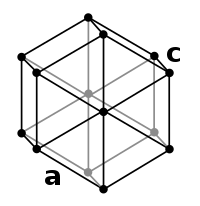
Photo from wikipedia
Abstract This study investigates the effect of the ignition position on vented hydrogen-air deflagration in a 1 m3 vessel and evaluates the performance of the commercial computational fluid dynamics (CFD) code… Click to show full abstract
Abstract This study investigates the effect of the ignition position on vented hydrogen-air deflagration in a 1 m3 vessel and evaluates the performance of the commercial computational fluid dynamics (CFD) code FLACS in simulating the vented explosion of hydrogen-air mixtures. First, the differences in the measured pressure-time histories for various ignition locations are presented, and the mechanisms responsible for the generation of different pressure peaks are explained, along with the flame behavior. Secondly, the CFD software FLACS is assessed against the experimental data. The characteristic phenomena of vented explosion are observed for hydrogen-air mixtures ignited at different ignition positions, such as Helmholtz oscillation for front ignition, the interaction between external explosion and combustion inside the vessel for central ignition, and the wall effect for back-wall ignition. Flame-acoustic interaction are observed in all cases, particularly in those of front ignition and very lean hydrogen-air mixtures. The predicted flame behavior agree well with the experimental data in general while the simulated maximum overpressures are larger than the experimental values by a factor of 1.5–2, which is conservative then would lead to a safe design of explosion panels for instance. Not only the flame development during the deflagration was well-simulated for the different ignition locations, but also the correspondence between the pressure transients and flame behavior was also accurately calculated. The comparison of the predicted results with the experimental data shows the performance of FLACS to model vented mixtures of hydrogen with air ignited in a lab scale vessel. However, the experimental scale is often smaller than that used in practical scenarios, such as hydrogen refueling installations. Thus, future large-scale experiments are necessary to assess the performance of FLACS in practical use.
Journal Title: Journal of Loss Prevention in the Process Industries
Year Published: 2019
Link to full text (if available)
Share on Social Media: Sign Up to like & get
recommendations!